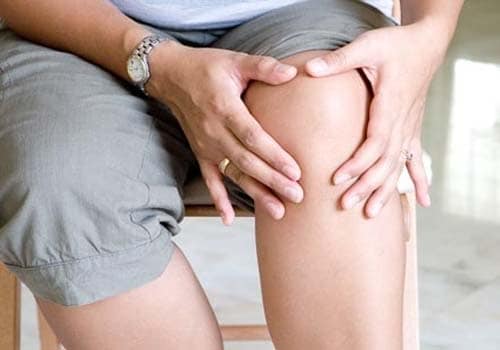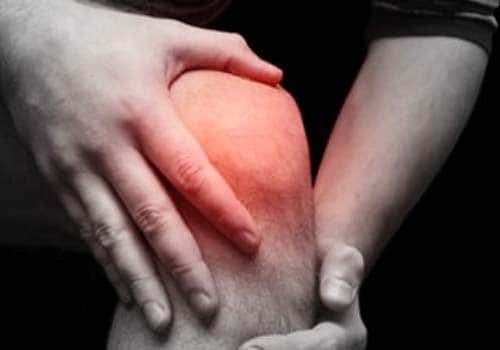-

What are the functions of the knee?
The knee joint has three parts. The thigh bone (femur) meets the large shin bone (tibia) forming the main knee joint. This joint has an inner (medial) and an outer (lateral) compartment. The kneecap (patella) joins the femur to form a third joint, called the patellofemoral joint.
A joint capsule surrounds the knee joint with ligaments strapping the inside and outside of the joint (collateral ligaments) as well as crossing within the joint (cruciate ligaments). These ligaments provide stability and strength to the knee joint.
The meniscus is a thickened cartilage pad between the two joints formed by the femur and tibia. The meniscus acts as a smooth surface for the joint to move on. Fluid-filled sacs called bursae, which serve as gliding surfaces that reduce friction of the tendons, surround the knee joint. Below the kneecap, there is a large tendon (patellar tendon) that attaches to the front of the tibia bone. The large muscles of the thigh move the knee. The knee also rotates slightly under guidance of specific muscles of the thigh. The knee functions to allow movement of the leg and is critical to normal walking and is a weight-bearing joint. -

What injuries can cause knee pain?
An injury can affect any of the ligaments, bursae, or tendons surrounding the knee joint. The complexity of the design of the knee joint and the fact that it is an active weight-bearing joint are factors that make the knee one of the most commonly injured joints.
- Ligament Injury
Trauma can cause injury to the ligaments on the inner portion of the knee, the outer portion of the knee or within the knee. Injuries to these areas are noticed as immediate pain, but are sometimes difficult to localise. A collateral ligament injury is often associated with local tenderness over the area of the ligament involved. A ligament injury to the knee is usually painful at rest and may be swollen and warm. The pain can worsen by bending the knee, putting weight on the knee or walking. The severity of the injury can vary from mild (minor stretching or tearing of the ligament fibres, such as a low grade sprain) to severe (complete tear of the ligament fibres). Patients can have more than one area injured in a single traumatic event.
Ligament injuries are initially treated with ice packs and immobilisation, with rest and elevation. It is generally initially recommended to avoid bearing weight on the injured joint and crutches may be required for walking. Some patients are placed in splints or braces to immobilise the joint to decrease pain and promote healing. Arthroscopic or open surgery may be necessary to repair severe injuries.
- Meniscus tears
The meniscus can be torn with the shearing forces of rotation that are applied to the knee during sharp, rapid motions. This is especially common in sports requiring reaction body movements. There is a higher incidence with aging and degeneration of the underlying cartilage. More than one tear can be present in an individual meniscus. The patient with a meniscal tear may have a rapid onset of a popping sensation with a certain activity or movement of the knee. Occasionally, it is associated with swelling and warmth in the knee. It is often associated with locking or unstable sensation in the knee joint. The meniscal tear can be diagnosed in one of three ways: arthroscopy, arthrography, or an MRI.
- Tendinitis
Tendinitis is an inflammation of the tendon, which is often produced by a strain event, such as jumping. Tendinitis is diagnosed based on the presence of pain and tenderness localised to the tendon. It is treated with a combination of ice packs, immobilisation with a knee brace as needed, rest, and anti-inflammatory medications. In severe cases, surgery may be required. Surgical repair of the ruptured tendon is often necessary.
- Fractures
With severe knee trauma, such as motor vehicle accidents, bone breakage (fracture) of any of the three bones of the knee can occur. Bone fractures within the knee joint can be serious and can require surgical repair as well as immobilisation with casting or other supports.
- Ligament Injury
-

What diseases and conditions can cause knee pain?
Knee pain can also be caused due to diseases or conditions that involve the knee joint, the soft tissues and the bones surrounding the knee, or the nerves that supply sensation to the knee area.
- Arthritis is the inflammation within a joint. The causes of knee joint inflammation range from non-inflammatory types of arthritis such as osteoarthritis, which is a degeneration of the cartilage of the knee, to inflammatory types of arthritis (rheumatoid arthritis or gout). Treatment of the various type of arthritis is directed towards the specific type of arthritis.
- Chondromalacia refers to the softening of the cartilage under the kneecap (patella). It is a common cause of deep knee pain and stiffness in younger women and can be associated with pain and stiffness after prolonged sitting and climbing stairs or hills. While treatment with anti-inflammatory medications, ice packs, and rest can help, long-term relief is best achieved by strengthening exercises for the muscles of the front of the thigh.
- Bursitis of the knee commonly occurs on the inside of the knee and the front of the kneecap. Bursitis is generally treated with ice packs, immobilisation, and anti-inflammatory medications and may require local injections of corticosteroids as well as exercise therapy to develop the musculature of the front of the thigh.
- Infections of the bone or joint can rarely be a serious cause of knee pain. They do have associated signs of infection including fever, extreme heat, warmth of the joint, chills of the body, and may be associated with puncture wounds in the area around the knee.
- Tumours involving the joint are extremely rare. They can cause problems with local pain.
- The collateral ligament on the inside of the knee joint can become calcified and is referred to as Pellegrini-Stieda syndrome. With this condition, the knee can become inflamed and can be treated conservatively with ice packs, immobilisation and rest.
- Arthritis is the inflammation within a joint. The causes of knee joint inflammation range from non-inflammatory types of arthritis such as osteoarthritis, which is a degeneration of the cartilage of the knee, to inflammatory types of arthritis (rheumatoid arthritis or gout). Treatment of the various type of arthritis is directed towards the specific type of arthritis.


















